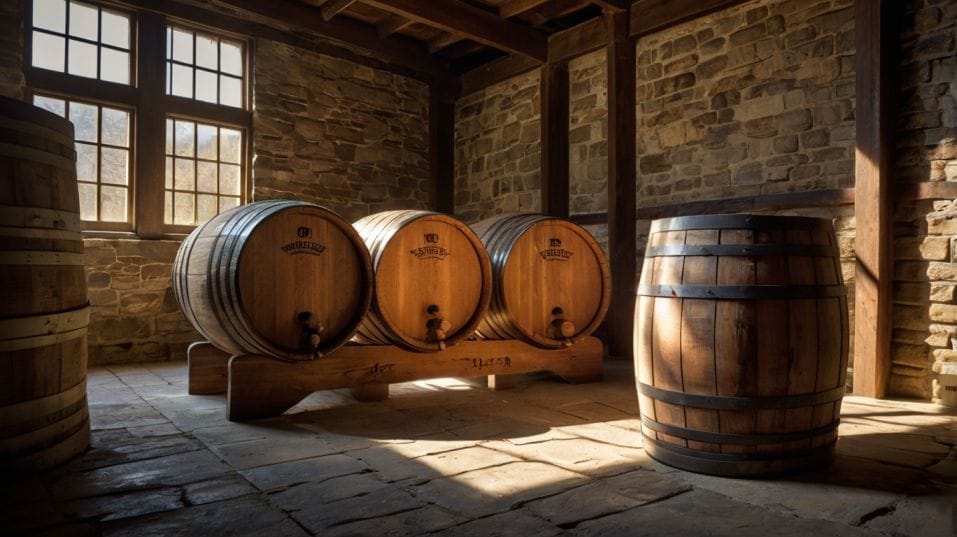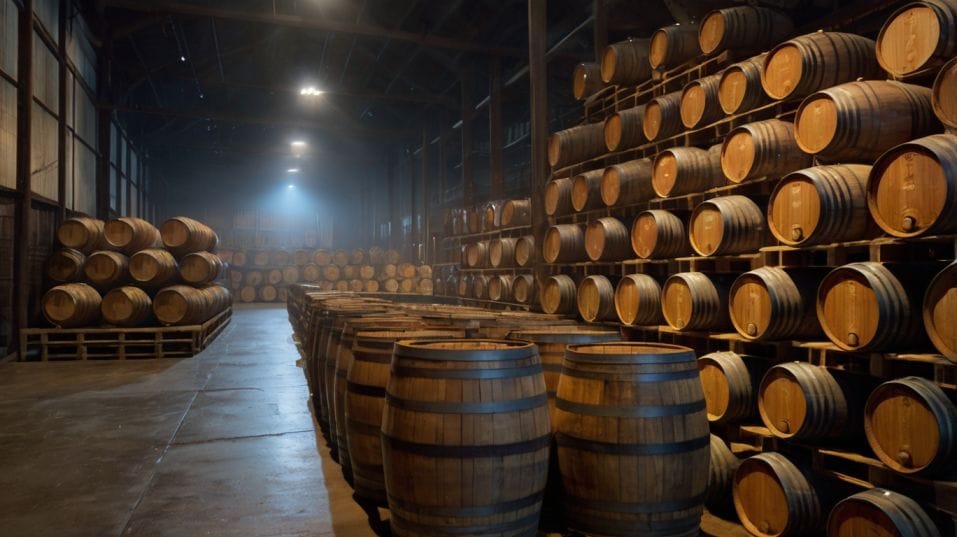Does Aging in Scotland Taste Different Than Kentucky?
Discover how whiskey aging in Scotland vs. Kentucky changes flavor. Taste smarter, collect wisely, and decode your next pour with purpose.

What if two whiskeys aged the same number of years tasted like they came from different worlds? They often do—and it’s not a fluke. It’s about where they mature.
Whether you're sipping your first dram or growing a serious collection, understanding how climate and location shape flavor is key.
If you want to taste better, buy smarter, and truly get what’s in your glass, it starts with knowing how whiskey ages.
Aging Isn’t Passive. It’s Interactive.
People talk about “letting whiskey sit in a barrel,” but that’s not what’s really happening. A barrel is not a storage unit. It’s an ecosystem.
The spirit is constantly breathing, expanding and contracting into the wood. Compounds break down. Flavors reform. The climate outside the barrel determines the pace and depth of this interaction.
In Kentucky, dramatic swings in temperature drive that interaction hard and fast. A sweltering summer day pushes spirit deep into charred oak staves.
In winter, it contracts back out, now carrying sugars, tannins, and bold spice with it. This cycle repeats over and over—intensely and quickly.
In Scotland, aging is more restrained. The maritime air, high humidity, and lower seasonal variation slow everything down.
The whiskey matures over time in a gentler exchange with the barrel. The result isn’t weaker—it’s different. It’s focused, deliberate, and often more subtle.
When you taste whiskey with this in mind, you're not just sipping—you’re decoding the influence of place and process. That’s where the real flavor education starts.

The Barrel’s Role: New vs. Used
The kind of barrel matters. But where that barrel lives matters just as much.
Kentucky whiskey is almost always aged in new, heavily charred American oak. It’s the law for bourbon, and it shapes the whiskey’s identity.
These barrels give huge hits of caramel, vanilla, cinnamon, brown sugar, and toasted oak—flavors that dominate quickly.
Combine that with Kentucky’s hot summers, and you get flavor saturation fast. That’s why a four- to six-year bourbon can taste full and complete. It’s not rushed—it’s just reacting to its environment.
Scotland’s distillers typically age spirit in used barrels—often ex-bourbon or sherry casks. The used wood is less aggressive. It doesn’t push itself into the whiskey.
It allows space for the underlying malt character to stay present. This is where Scotland’s signature flavors come from: heather, stone fruit, dried fig, earth, and a soft, evolving smoke.
Understanding this helps you evaluate bottles intelligently. A Scotch that spent 12 years in a refill hogshead will taste completely different than one aged the same time in a fresh sherry butt. One’s about restraint. The other’s about richness.
Climate Drives Maturation Speed—and Character
In Kentucky, barrels live in multi-story rickhouses where top floors can reach over 110°F (43°C) in summer. Whiskey up there ages fast—often too fast, which is why some distillers rotate barrels or blend across levels.
The heat means more evaporation—especially of alcohol—and more wood interaction. You get volume: thick mouthfeel, high sugar presence, bold spice.
In Scotland, many warehouses are dunnage style—low, cool, with earth floors. The spirit there matures slowly, evenly.
You won’t get the same mouth-coating sugars, but you’ll find layers: a waxy texture, soft oak grip, and flavors that unfold across time, not in a rush.
This also affects proof. In Kentucky, alcohol evaporates slower than water, so aging can raise proof. In Scotland’s damp air, the opposite happens—water stays put, alcohol leaves faster.
That’s why older Scotches are often lower ABV unless they’re cask strength. It’s not weakness—it’s part of the story.
Angel’s Share: The Cost of Maturity
Every barrel loses whiskey to evaporation. It’s poetic to call it the “Angel’s Share,” but the reality is brutal: in Kentucky, you might lose 30% or more over a decade.
That concentrates what’s left, especially sugars and oak compounds. The payoff is richness. The risk? Over-oaking. Too long in hot conditions, and your whiskey can flatten out—losing fruit, gaining bitter tannin.
Scotland loses less—maybe 2% a year—but the longer timelines allow different flavors to develop. Think of it as a slow roast versus a quick sear.
Over 15 or 20 years, a Scotch can develop leather, pipe tobacco, tropical fruit, waxy citrus, or subtle maritime notes—flavors you won’t get in a young bourbon, no matter how bold.
If you’re collecting, this matters. Older doesn’t always mean better—but older from Scotland carries a different risk-reward profile than older from Kentucky. It’s about style, not status.
Tasting Side by Side: What to Look For
Set up a tasting. One Kentucky bourbon—say, 6 to 8 years old. One Scottish single malt—10 to 12 years. Same age range, completely different climate and barrel impact.
Bourbon
On the bourbon, notice the structure: caramel hits early, followed by vanilla, baking spice, maybe a hint of dried cherry or leather. It’s broad, rich, and up-front.
Scotch
On the Scotch, take your time. The nose might seem restrained at first. Let it sit. Swirl. Then find soft orchard fruit, malt biscuit, maybe salt or smoke depending on the region. The palate will build, shift, and linger. You're tasting patience.
Don’t try to decide which is better. Focus on how they feel, where they lead your senses. That's how you train your palate and refine your collecting instincts.
Build Smarter, Not Bigger
Understanding aging lets you shop with intent. Instead of chasing proof or age statements, look for climate context. A 7-year cask-strength bourbon might be bolder than a 21-year Highland Scotch—and that’s not a flaw. It’s a feature.
Want sweetness and power in under 10 years? Think Kentucky. Want elegance and depth that unfolds slowly? Scotland’s your arena.
That’s how smart collectors build diversity—by respecting the role of aging conditions, not just the numbers on the label.
Final Thoughts
Yes, aging in Scotland absolutely tastes different than aging in Kentucky. Not because one is better—but because each expresses time in its own way.
If you're new to whiskey, this is your edge. Learn how place shapes flavor. Taste with climate in mind. Read past the label and into the process.
When you understand how aging really works, you stop drinking for brand names and start tasting for meaning.
So here’s your move: pick up two bottles from opposite ends of the map. Pour, taste, reflect.
Then do it again with different casks, different regions, different ages. Build your palate. Build your shelf. Build your whiskey instincts—starting today.




